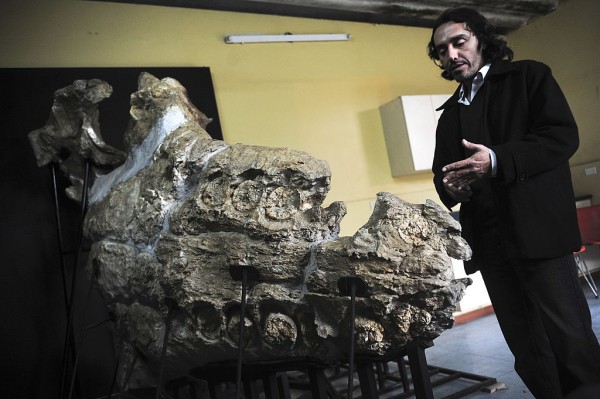
Albino ocelot
Albino ocelot

Albino ocelot
A 56-year-old man has died after being attacked by a shark on the Colombian island of San Andres.
Antonio Straccialini, an Italian tourist from Roseto Degli Abruzzi, lost a large chunk of his right thigh after being bitten by an eight-foot tiger shark as he swam in a popular snorkelling area on the island called La Piscinita

55-Ft Long Ancient Marine Monster With Razor-Sharp Teeth Discovered, Ancient Sea Creature Unlike Present Gentle Whales
Ask a random person to picture a bee, and they’ll likely conjure up the familiar black-and-yellow striped creature buzzing from flower to flower collecting pollen to bring back to the hive. But a more unusual group of bees can be found “slicing chunks of meat from carcasses in tropical rainforests,” according to the authors of a new paper published in the journal mBio. As a result, these bees have gut microbiomes that are markedly different from their fellow buzzers, with populations more common to carrion-loving hyenas and vultures. So they are commonly known as “vulture bees” (or “carrion bees”).

More than 12,000 years ago, South America was teeming with an astonishing array of ice age beasts — giant ground sloths the size of a car, elephantine herbivores and a deerlike animal with an elongated snout.
These extinct giants are among many animals immortalized in an 8-mile-long (13-kilometer-long) frieze of rock paintings at Serranía de la Lindosa in the Colombian Amazon rainforest — art created by some of the earliest humans to live in the region, according to a new study.

Biggest bacterium ever discovered amazes scientists with its complexity

A replica of one of the largest dinosaurs ever discovered is unveiled at the American Museum of Natural History on January 14, 2016 in New York City. The replica of the “Titanosaur” weighs about 70 tons, is 17 feet tall and stretches to nearly 122 feet long. The dinosaur belongs to the titanosaur family and was discovered by Paleontologists in the Patagonian Desert of Argentina in 2014 and lived about 100 to 95 million years ago. The exhibit at the museum features bones, fossils and a fibreglass replica of the creature.
The people of Peru’s Comunidad Nativa Tres Esquinas have long known about a tiny, burrowing frog with a long snout; one local name for it is rana danta, “tapir frog” for its resemblance to the large-nosed Amazonian mammal. But until now, this frog has remained elusive to biologists. Thanks to the help of local guides, an international team of researchers was able to find the frog and give it an official scientific name and description.

End of the road in Colombia for Escobar’s ‘cocaine’ hippos?